Kick off your job search with a job-winning manufacturing engineer resume that speaks volumes about your skills and experience. Follow our comprehensive guide and discover all the best writing tips, professional templates, inspiring examples, and resume samples submitted by actual manufacturing professionals. Without further ado, let's begin!
In this guide, we'll explore the art of crafting a compelling manufacturing engineer resume that showcases not only your wealth of experience but also your diverse expertise.
Keep reading to learn the answers to the following questions:
- Which resume format is best for manufacturing engineers?
- How do you write a compelling manufacturing engineer summary?
- Which key skills should a manufacturing engineer put on a resume?
- How should a manufacturing engineer describe their work experience?
- What educational credentials does a manufacturing engineer resume need?
- Where to look for job opportunities for manufacturing engineers?
1. Select the best format for your manufacturing engineer resume
In general, when you apply for highly technical positions — such as a manufacturing engineer — you want to select a resume format that will showcase your work experience.
The reverse-chronological resume does exactly this, focusing almost entirely on work experience, listing your most recent position first and working backward from that point. There are still other sections on this resume, but they're smaller and placed in sidebars while the work experience sits as the centerpiece of the document.
However, if you're new to the field and lack enough relevant work history, opting for a reverse-chronological resume may be less than ideal.
In this scenario, you should consider one of the following formats:
- Functional: The functional resume is a format primarily designed for students and recent graduates. Rather than focusing on work experience, this resume format highlights educational experience, skills, and unpaid experience.
- Hybrid: The hybrid resume combines elements of both the reverse-chronological and functional formats. This resume provides equal amounts of focus for each section of the document and is well-suited for applicants who have some experience, who are changing career paths, or who are working around large gaps in their employment.
2. Craft a compelling manufacturing engineer resume summary
A resume summary can make or break your chances of making it to the interview stage. The resume summary is a brief, 1-3 sentence statement that helps introduce you to the employer.
In this summary, you can detail a few different things including:
- Professional goals
- Certifications
- Key accomplishments
No matter what you choose to include in your summary, you should always strive to use active and engaging language that hooks the attention of the employer. A well-written summary can help you impress employers and compel them to want to learn more about you.
Below we have provided an example of a weak summary, followed by a correction and explanation:
Bad manufacturing engineer resume summary example
Manufacturing Engineer with experience working in commercial factories and production facilities. Specialized in the design of plastic goods, with an emphasis on using recycled plastics for sustainability purposes. Helped source a new materials supplier that cut material costs substantially.
What's wrong with this example? This resume summary has all the basic elements needed to create an effective statement, yet fails to provide a high enough level of specificity or context to make these details compelling to employers. To improve this summary, the applicant needs to more clearly describe their passion for recycled materials and sustainability, as well as provide further context around the new materials supplier.
Good manufacturing engineer resume summary example
Dedicated Manufacturing Engineer with certifications in Plastics Engineering Technology and Sustainable Engineering. Introduced a new recycling system to cut material spending, as well as a new materials supplier. Combined, these achievements led to a 30% decrease in annual material expenses.
Why is this better? In this corrected example, the applicant clearly shows their passions and specializations by listing the specific certifications they've earned. They go on to describe in detail how they achieved a significant reduction in material costs at their previous position. These details help to show employers the applicant’s commitment to the job and the additional value they can provide.
3. Include key skills in your manufacturing engineer resume
Working as a manufacturing engineer is a highly technical job – however, there are still many instances in which such professionals must collaborate and cooperate with other team members. In some scenarios, a manufacturing engineer may even take a leadership role over a crew of production staff.
As such, it is essential to include both technical and interpersonal skills on a manufacturing engineer resume.
To give you an idea of what types of skills to include, here are 10 examples of hard skills and 10 examples of soft skills that look great on a resume:
Effective hard skills to put on your manufacturing engineer resume
- Knowledge of Manufacturing Processes
- Product and Manufacturing Design
- Research Product Requirements
- Calculating Budgetary Needs
- Collecting and Analyzing Trend Data
- Regulatory Compliance
- Quality Assurance
- Computer Software Programs (CAD, Adobe Suite, etc.)
- Continuous Professional Development
- Creating Production Schedules
Best soft skills for your manufacturing engineer resume
- Innovation
- Creativity
- Collaboration
- Delegation
- Leadership
- Attention to Detail
- Problem-Solving
- Verbal and Written Communication
- Adaptability
- Organization
4. Tailor your manufacturing engineer work experience section to a specific job
Your work experience section should always focus on highlighting your most important responsibilities and accomplishments from your previous positions.
Rather than focusing on what your basic abilities and tasks were, you should strive to include more compelling information in this section to prove to employers you will make a valuable new addition to their team.
Here's an example of a good work experience entry from a manufacturing engineer resume
Manufacturing Engineer | Global Production Goods, Inc.
Dayton, Ohio | January 2017 to May 2021
- Managed the 3-D design process for 50+ new products on an annual basis.
- Earned a grant to invest in an advanced 3-D printing device that led to a 40% reduction in material wastes and a 35% increase in project completion speed.
- Presented a new development cost solution to help solve crucial production issues that was accepted and implemented by management.
5. Make your manufacturing engineer resume stand out with an effective education section
Working in an engineering role will almost always require you to have a minimum of a four-year degree in your chosen field.
Elevate your manufacturing engineer resume by crafting an impactful education section that showcases your academic achievements and technical prowess.
As a manufacturing engineer, your education is a crucial foundation that potential employers want to see. Highlight your relevant degrees, certifications, and specialized training that make you a skilled and knowledgeable professional in the field.
Here's an example of a well-crafted education section on a manufacturing engineer resume
Education
B.S. in Manufacturing Engineering | Appalachian State University
Boone, NC
- Minor: Business Sustainability
- Graduated: 2016, Summa Cum Laude
Certifications
- Plastics Engineering Technology Certificate | Appalachian State University
6. Top resources for job-seeking manufacturing engineers
Before you put the pen to paper and start writing your manufacturing engineer resume, you need to find job opportunities that are worth the effort. We've put together a list of resources that can help you kick start your quest for the ideal job position:
- Job boards for manufacturing engineers: Tap into websites that list job postings focused especially for the manufacturing industry, such as iHireManufacturingEngineers, JobsInManufacturing, or Engineering.com.
- General job search platforms: Make sure to also look into job postings offered by websites like Indeed, Monster, or Glassdoor.
- LinkedIn: Link up with fellow industry professionals and potential employers with the help of LinkedIn.
- Professional associations: Access to networking events, job postings, and professional training — all that under one roof! That's what organizations like Society of Manufacturing Engineers (SME), the Manufacturing Institute (MI), and National Society of Professional Engineers (NSPE) have to offer.
- Specialized publications: Keep up with the latest industry news, insights, innovations, and trends by following media like “Manufacturing Engineering Magazine,” “Manufacturing.net,” or “Industrial Engineer Magazine.”
- Continuous learning: To maintain your competitive edge, you need to keep on learning and improving. Check out online learning platforms like Coursera, edX, or Udemy that boast a wide selection of courses and certifications.
Before we part ways, let us remind you that the process of job hunting can sometimes take months. But it's important to not lose your dedication and passion, and to persevere until you find exactly what you're looking for. Good luck!
Manufacturing Engineer Resume FAQ
How should I effectively use keywords in my manufacturing engineer resume?
First of all, you need to review the job posting carefully and note the specific skills and qualifications required for the role. Then, integrate these keywords naturally into your resume, not only in the “Skills” and “Experience” sections, but also in your “Resume summary,” “Education” (in case the job posting requires you to have a certain degree), or “Certifications” (this is an optional resume section). This strategy helps align your resume with the employer’s needs and helps you pass through Applicant Tracking Systems (ATS).
What are common mistakes I should avoid?
Some of the most common mistakes include overly dense text blocks, lack of quantifiable achievements, typos, grammatical errors, and irrelevant information. Also, avoid using a one-size-fits-all resume for every application; instead, customize your resume for each job by emphasizing the skills and experiences that are most relevant.
How can I best showcase my skills as a manufacturing engineer on my resume?
Instead of just listing your skills in the “Skills” section, incorporate them into your previous jobs description. Focus on specific technical competencies such as CAD software, process optimization, or lean manufacturing. Put them into context by mentioning a specific situation/problem where your skills contributed to positive results. Also, iInclude measurable achievements where possible, like reductions in waste, improvements in efficiency, or cost savings you have facilitated.
How can I highlight my project management experience on my resume?
The best way to do this is by detailing the scope of the projects you've managed, the teams you've led, and the outcomes you've achieved. For example, you might mention a project where you led a team of 10 to develop a new assembly line that increased production efficiency by 20%.
Why are action verbs important in a manufacturing engineer resume, and which ones should I use?
Using strong action verbs helps to make your contributions and achievements stand out more vividly, painting a dynamic picture of your capabilities. For example: “Optimized, “Engineered,” “Developed,” “Analyzed?,” “Spearheaded,” or “Streamlined.”




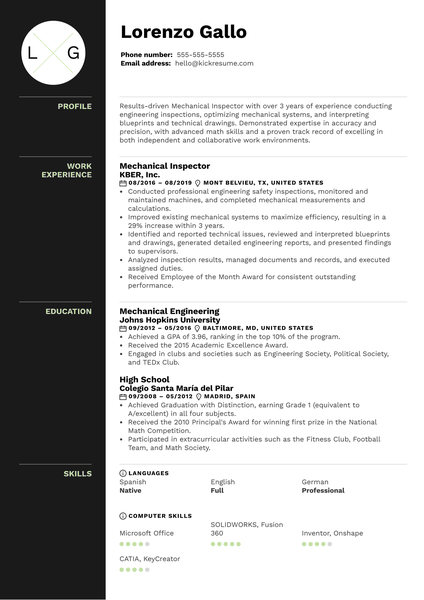

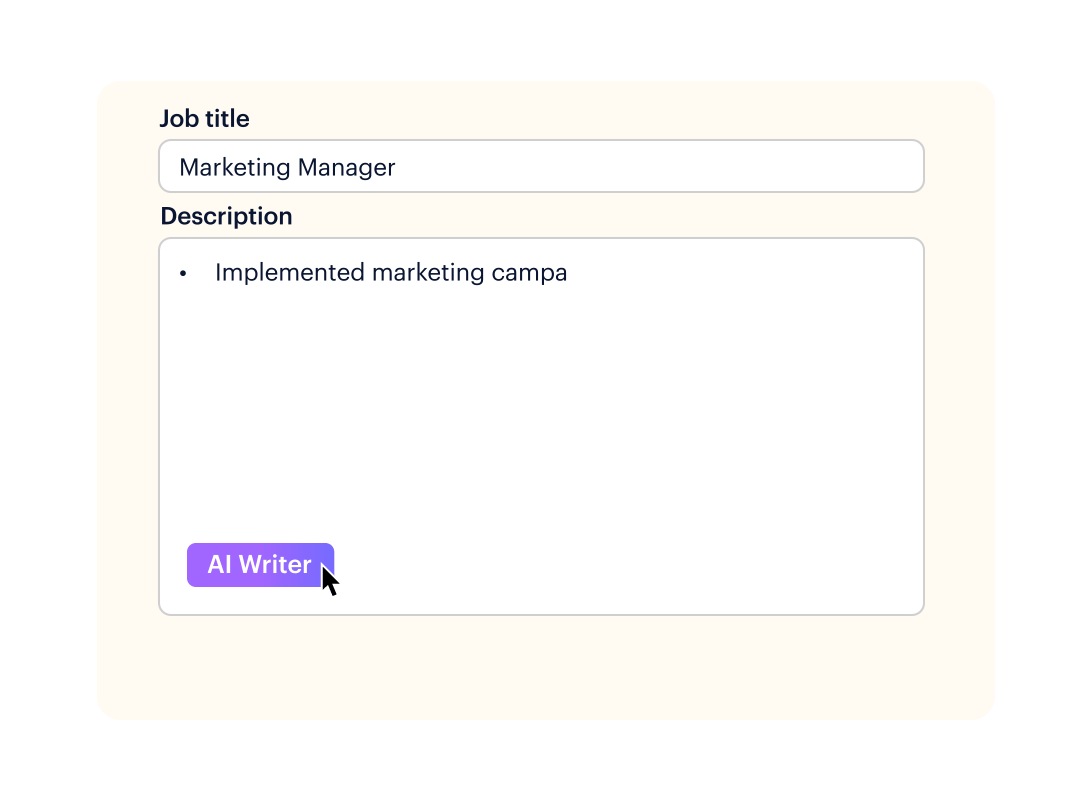

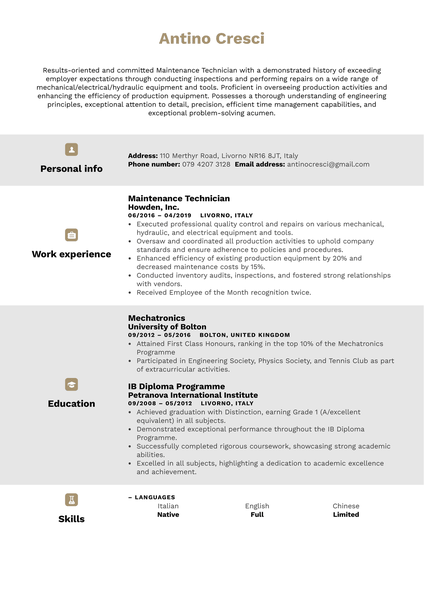
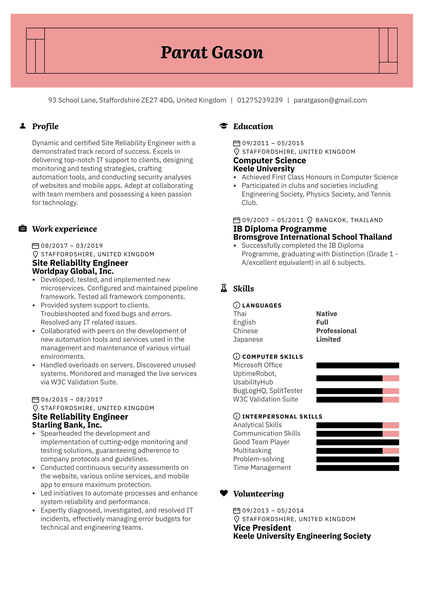
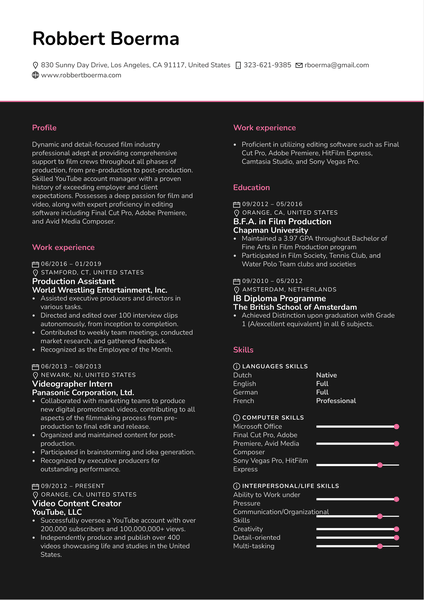
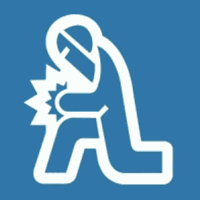
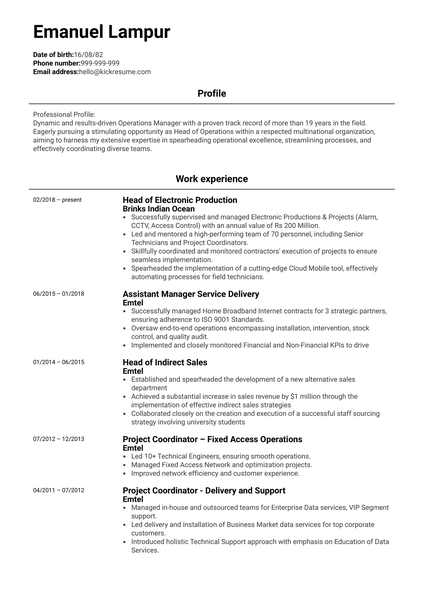
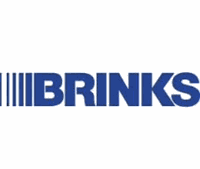
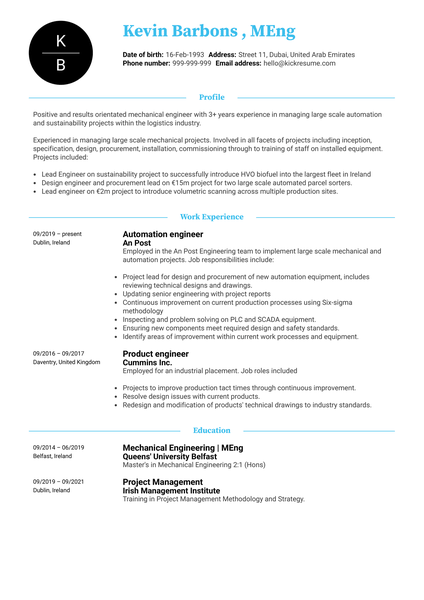

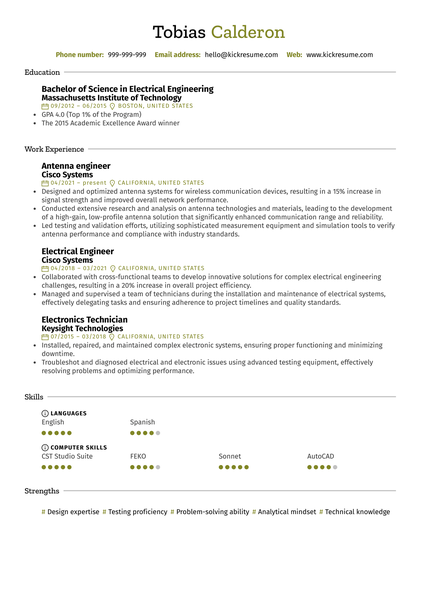
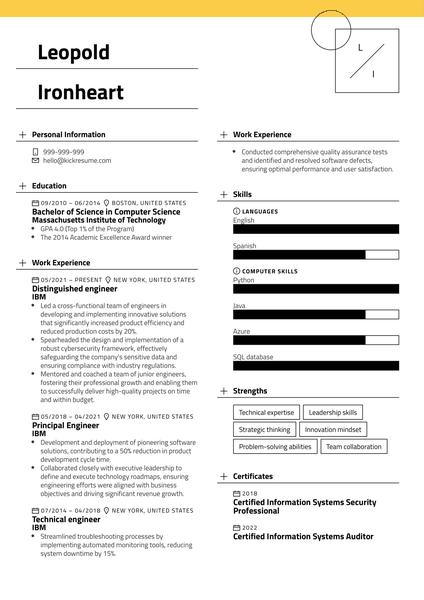
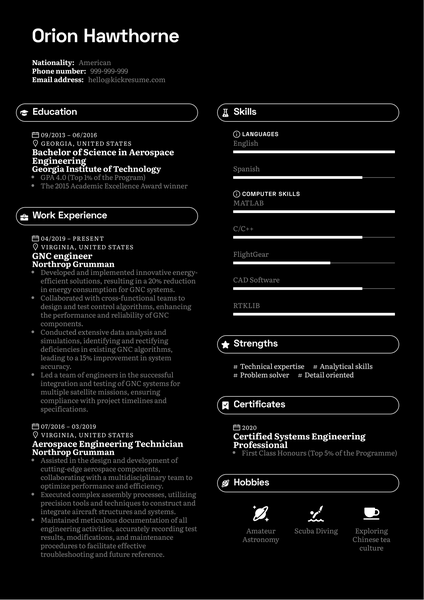

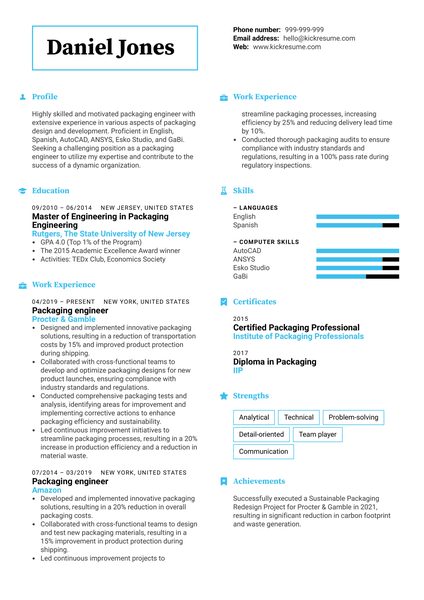
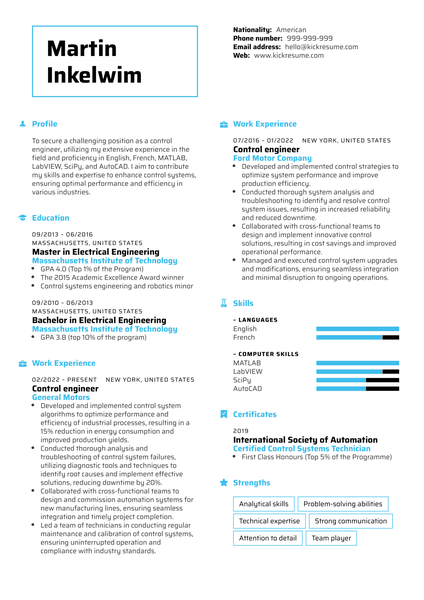
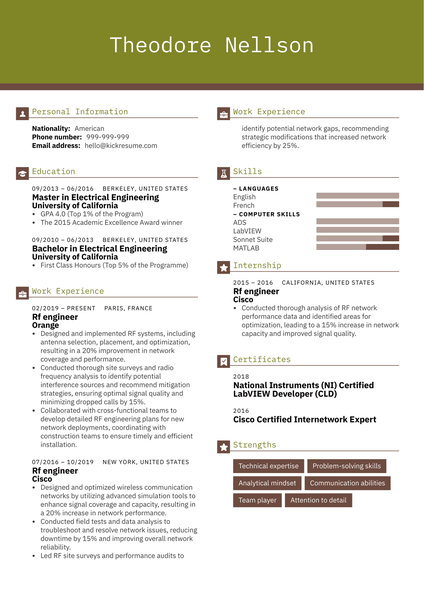
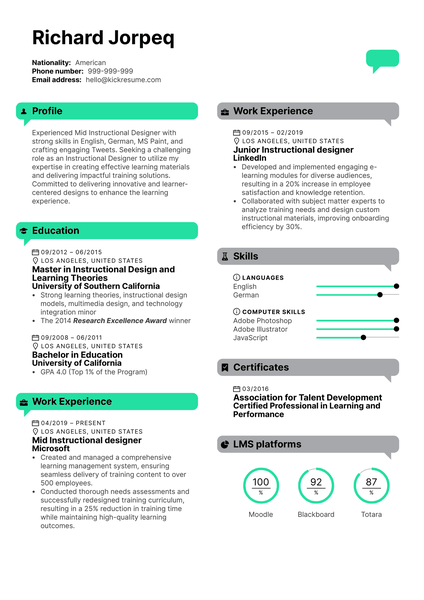

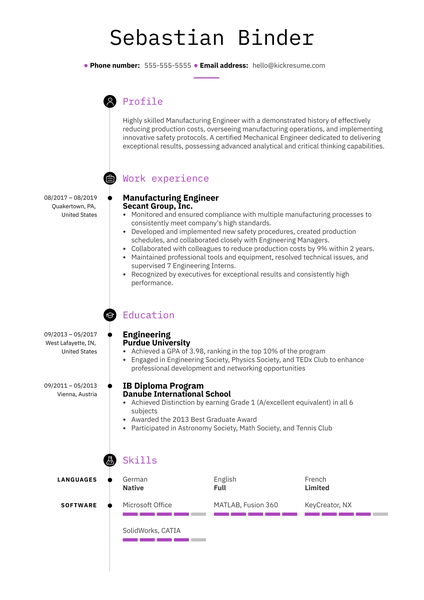
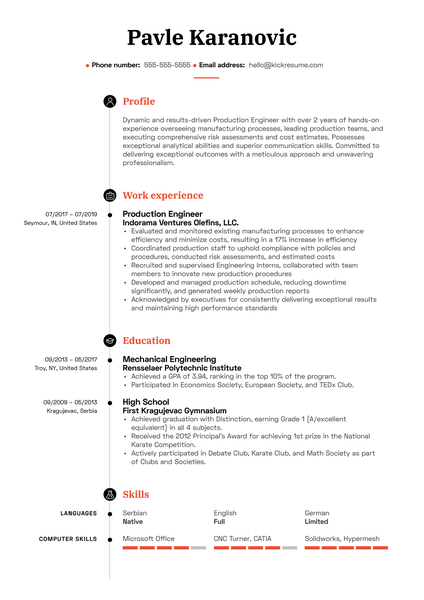
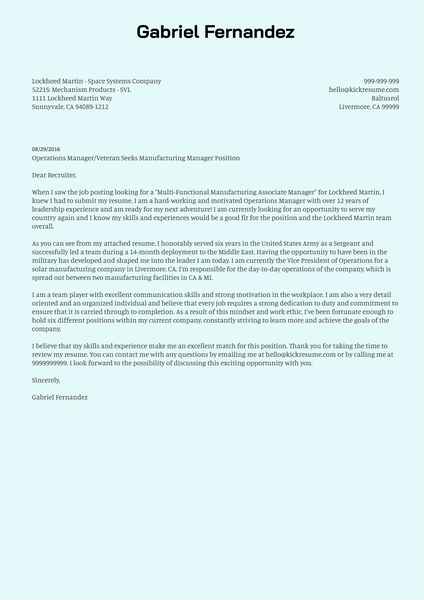

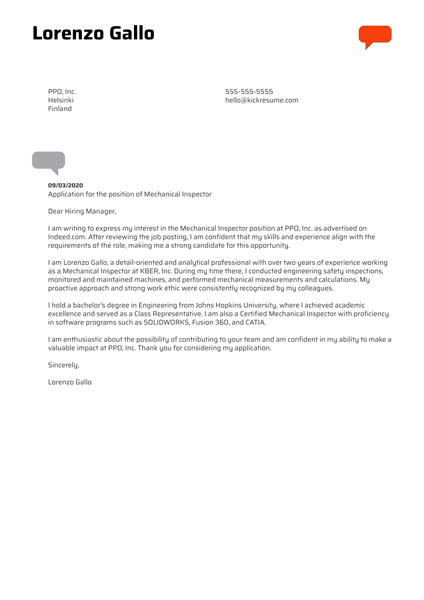
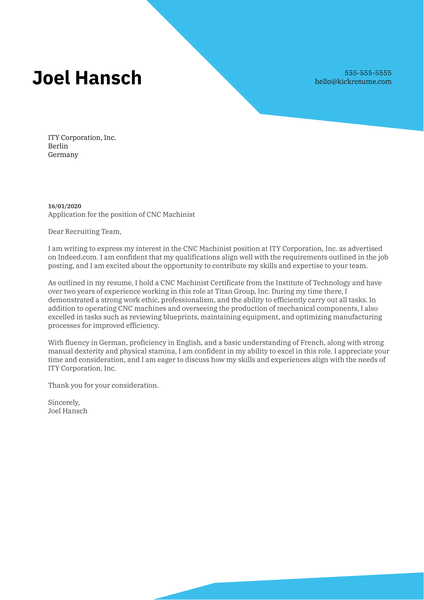

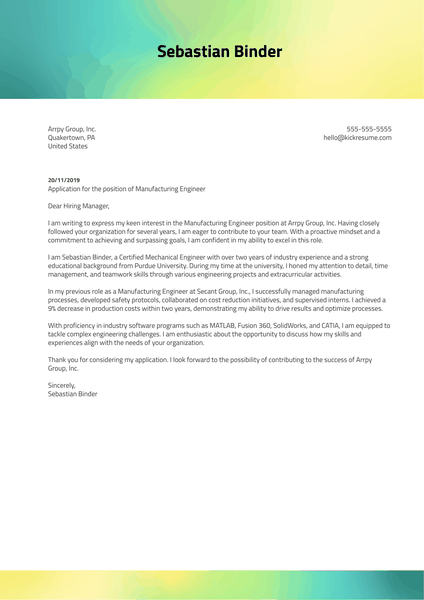
![How to Write a Professional Resume Summary? [+Examples]](https://d2xe0iugdha6pz.cloudfront.net/article-small-images/i-Profile.svg)
![How to Put Your Education on a Resume? [+Examples]](https://d2xe0iugdha6pz.cloudfront.net/article-small-images/i-Collage-Universities.svg)
![How to Describe Your Work Experience on a Resume? [+Examples]](https://d2xe0iugdha6pz.cloudfront.net/article-small-images/Experience.svg)


